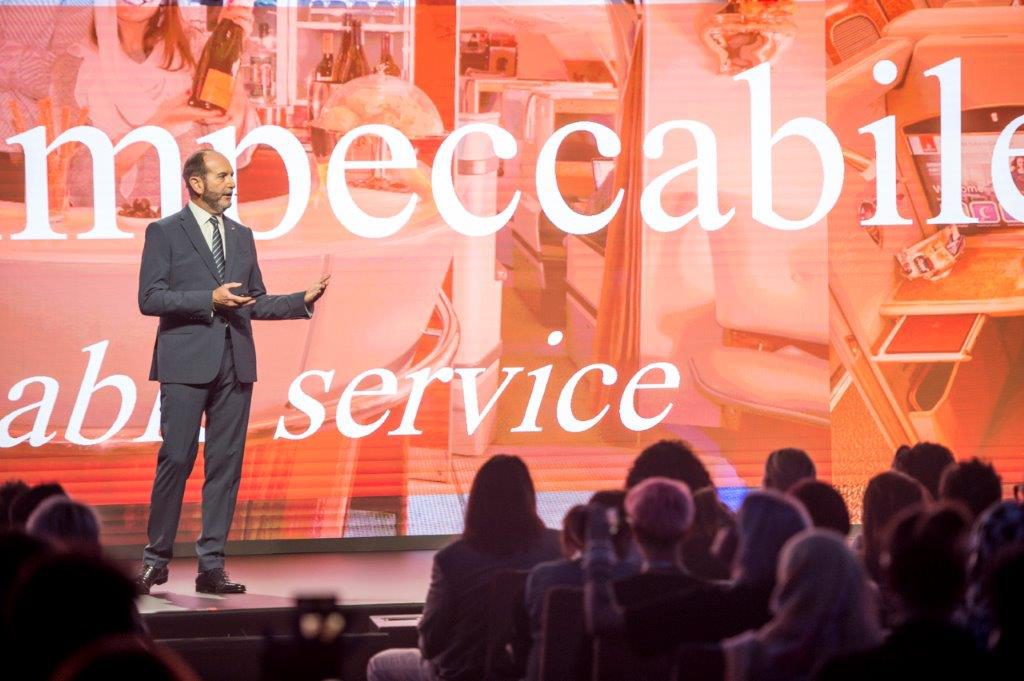EsteticaExport begins 2022 on a note of positivity and goodwill – in conversation with Fabio Franchina, President of Framesi, which is a professional hair cosmetics company with representation across the globe.
Framesi has been present in the US market since 1979. From your point of view, what has changed there for exporters and what does the near future hold for the hair and beauty industry?
“The biggest change that we have seen in the last few years has been the consolidation of distribution. The US market is still the biggest especially for a business like ours, but is a very difficult one to work in because of how distribution works there. To succeed in the USA, brands not only need a network to cover the whole country, but also distributors who can place products in stores. This is fundamental to allowing the hairdresser to buy your brand on an everyday basis. Without proper capillary distribution that would be impossible.
What happens today is that two giant distributors control most of the professional market: the first one has been around for a long time getting bigger and bigger, today they count around 1,500 stores; while the second one started about 15 years ago; it belongs to a European company and has been acquiring small distributors across the country and so creating a new important network of about 1,300 stores.
However, a company wanting to enter the US market does not need to go to these huge distributors because they might demand too much of a small or medium company, especially at the beginning.”

Framesi is present in a large number of countries in the world.
What other markets do you consider the most promising for you in general?
“Talking about the professional hairdressers business, I believe that mature markets still offer the best opportunity for exporters; so, countries like Germany, France, Italy and the UK. I’m aware that China is a big challenge, as well as India and Brazil, but these markets are so difficult in many ways, that they might not be worth the effort. Quality products, innovative design, and high-level performance are more suitable for a sophisticated consumer that you can find more easily in a mature market. Other interesting areas for a company just starting out in export are some countries in South America, plus Canada. Of course, you can start more easily in a smaller market, but if you want to create something solid and consistent in time, you will need to face the challenge of the mature markets. What I strongly recommend to anyone who wants to export is to have a long-term plan and choose the right markets for their companies, monitoring every step along the way.”
You have participated on a panel about Men’s Grooming. Do you consider this a sector with great growth potential in international markets and do you think separating male and female products will increase the future, or we are going towards ‘gender-free’ hair & beauty?
“There is a specific need, but you cannot only talk about ‘men’s products’ as gender fluidity is beginning to reflect a very different perspective on men’s grooming. Designing products today is very different for both men and for women, as nowadays we manufacture products that answer the needs of the public without specifying gender. For example, our recent barber gel line in Taiwan is being bought by more women than men. Taiwanese women seem to like the fragrance, and the performance and so they buy a barber product because they do not see it as ‘men only’.
To satisfy the needs of the high-spending male market, we need to offer something specifically designed for them, but that doesn’t mean that women shouldn’t buy these products if they like them”.
Do you think that the international hair and beauty industry will be different as a result of the pandemic and what impact has it had on your company?
“The pandemic will change the behaviour of consumers. In the last two years, especially during lockdown, we saw people questioning their own values. Environmental issues have become more and more important, but probably the most dramatic change has been a change in attitude towards technology. This has greatly affected how people make purchases. To become a ‘smart consumer’ we need all the information at our fingertips; this has seen consumers become more focused, more sophisticated and more selective. What we have seen from our side is that hairdressers – even in the bleakest moments time of the pandemic – appreciated our support with good education and the help we could give them to run their business successfully. What we strive to do is to work every day for the success of hairdressers: this is the most important value we can offer and it will be vital in the future”.
What is your company planning for the future?
“The good news is that we have been in the market for 76 years working exclusively with hairdressers; I believe we are going to do the same for at least the next 76 years. I believe that we must provide a selection of products that is always improving – new methodology, new applications, new colours and new ideas. In the second half of 2022, we are going to have a major innovation in our treatment line and I strongly believe that this, along with the high level of education we provide, will answer to the needs of any hairdresser in the world”.












